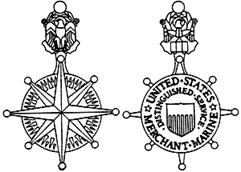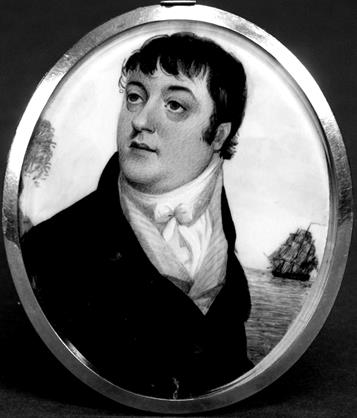were lost. Mariners died at a rate of 1 in 26, which was the highest rate of casualties of any service. All told, 733 American cargo ships were lost and 8,651 of the 215,000 who served perished in troubled waters and off enemy shores.
Merchant Marine ships are ’armed‘ only during war time. When WW II was officially declared over, all the guns were dismantled and tossed overboard.
Merchant shipping also played its role in the Korean War, under the operational control in theater of the Military Sea Transportation Service (MSTS), the number of chartered ships grew from 6 to 255. In September 1950, when the Marine Corps went ashore at Incheon, 13 Navy cargo ships, 26 chartered American, and 34 Japanese-manned merchant ships of the MSTS participated. For the Korean War, 540 vessels were activated to support military forces. A worldwide tonnage shortfall from 1951 to 1953 required over 600 ship activations to lift coal to Northern Europe and grain to India. The Dept of Agriculture required 698 activated ships to store grain from 1955 through 1964. After the Suez Canal Crisis in 1956, the NDRF activated 223 cargo ships and 29 tankers. During the Berlin Wall Crisis of 1961, 18 NDRF vessels were activated, remaining in service until 1970.
During the Vietnam War, at least 172 National Defense Reserve Fleet (NDRF) ships were activated, including WW II Liberty and Victory ships, and together with other US-flagged merchant vessels crewed by civilian seamen, carried 95% of the supplies used by the American armed forces. Many of these ships sailed into combat zones under fire.
During the first Gulf War, the merchant ships of the Military Sealift Command (MSC) delivered more than 12 million metric tons of vehicles, helicopters, ammunition, fuel and other supplies and equipment. At one point during the war, more than 230 government-owned and chartered ships were involved in the sealift.
As of January 2017, US Government-owned merchant vessels from the National Defense Reserve Fleet have supported emergency shipping requirements in 10 wars and crises.
Since 1976, the Ready Reserve Fleet (RRF) has taken the brunt of the work previously handled by the National Defense Reserve Fleet. The RRF made a major contribution to the success of Operation Desert Shield / Operation Desert Storm from August 1990 through June 1992, when 79 vessels helped meet military sealift requirements by carrying 25% of the unit equipment and 45% of the ammunition needed.
Two RRF tankers, two Roll-on/Roll-off (they carry tanks and other heavy equipment and with a shallow draft, can come closer to shore for off loading.) ships and a troop transport ship were employed in Somalia for Operation Restore Hope in 1993 and 1994. During the Haitian crisis in 1994, 15 ships were activated for Operation Uphold Democracy operations. In 1995 and 1996, four RO/RO ships were used to deliver military cargo as part of US and UK support to NATO peace-keeping missions. Four RRF ships were activated to provide humanitarian assistance for Central America
following Hurricane Mitch in 1998.
The Military Sealift Command (MSC), an arm of the Navy, serves the entire Department of Defense as the ocean carrier of material during peacetime and war, and includes two Navy Hospital ships, the Comfort and the Mercy. MSC transports equipment, fuel, ammunition, and other goods essential to US armed forces worldwide. Up to 95% of all supplies needed to sustain the US military can be moved by Military Sealift Command. As of February 2017, MSC operated approximately 120 ships with 100 more in reserve. More than 5,500 civil service or contract merchant mariners staff the ships. MSC tankers and freighters have a long history of also serving as supply vessels in support of civilian research in the Arctic and Antarctic, including: McMurdo Station, Antarctica; and Greenland in the Arctic.[sources: various]
Merchant Marine Distinguished Service Medal is the highest award which can be bestowed upon members of that service and is the service’s equivalent of the Medal of Honor. It is awarded to any seaman in the USMM who, on or after 3 September 1939, has distinguished himself during the war by outstanding conduct or service in the line of duty.

Merchant Marine Distinguished Service Medal is the highest award which can be bestowed upon members of that service and is the service’s equivalent of the Medal of Honor. It is awarded to any seaman in the USMM who, on or after 3 September 1939, has distinguished himself during the war by outstanding conduct or service in the line of duty.

O’Brien has been the name of six US ships:
USS O’Brien (TB-30), torpedo boat, 1900-1909.
USS O’Brien (DD-51), O’Brien-class destroyer, 1915-1922.
USS O’Brien (DD-415), Sims-class destroyer, 1940 until she was sunk by a torpedo in 1942.
SS Jeremiah O’Brien, Liberty ship, served during World War II 1943-1946 and is still operational, now home ported in San Francisco.
USS O’Brien (DD-725), Allen M. Sumner-class destroyer, 1944-1972.
USS O’Brien (DD-975), Spruance-class destroyer, 1976-2004.